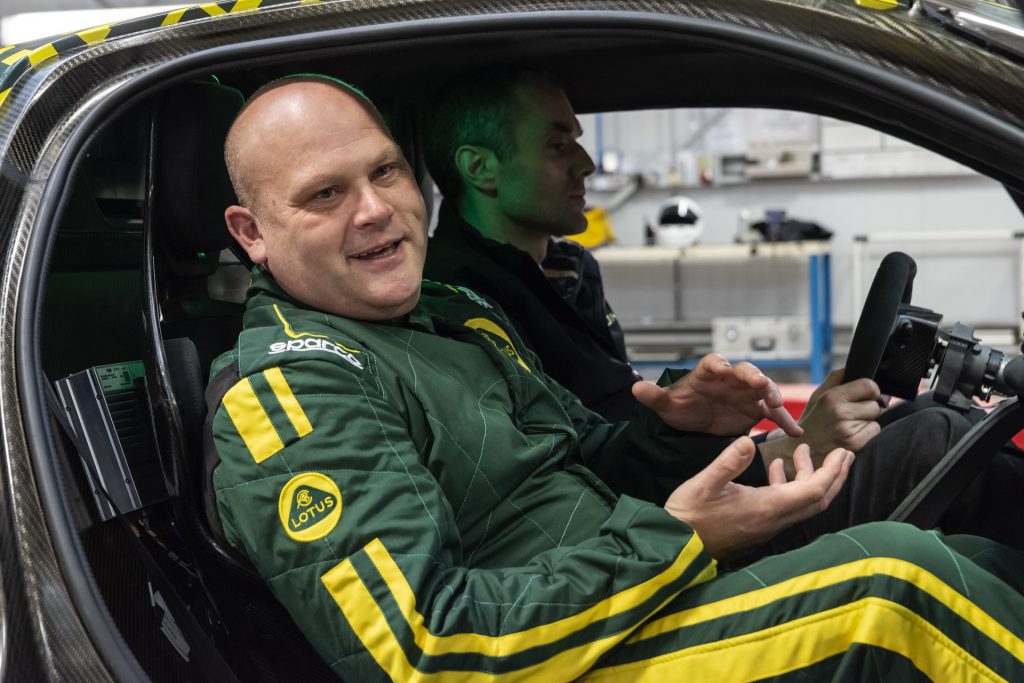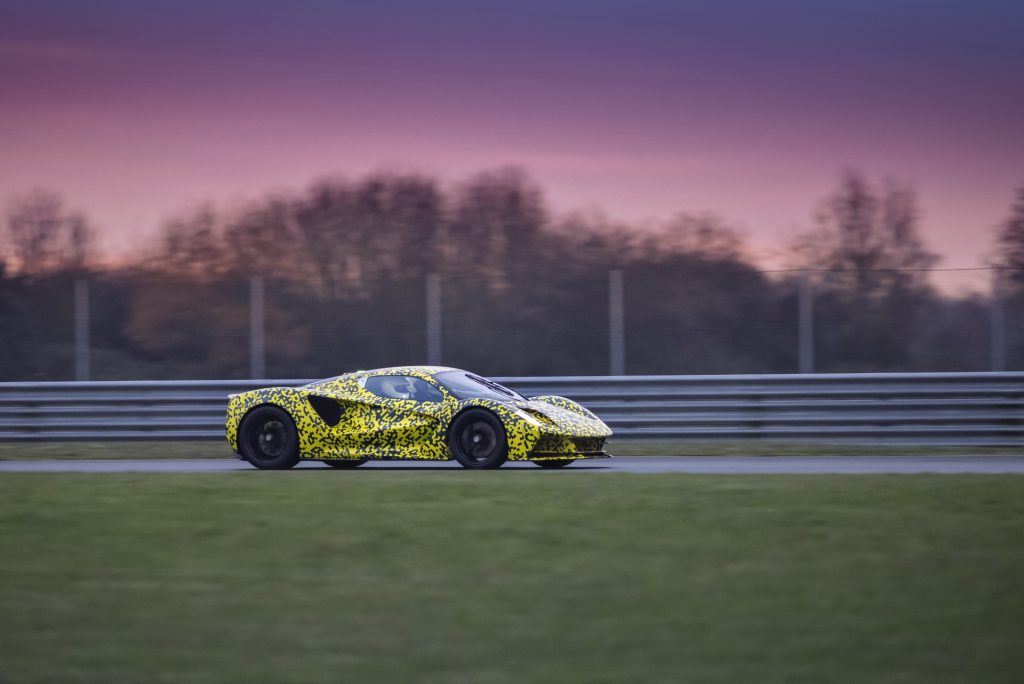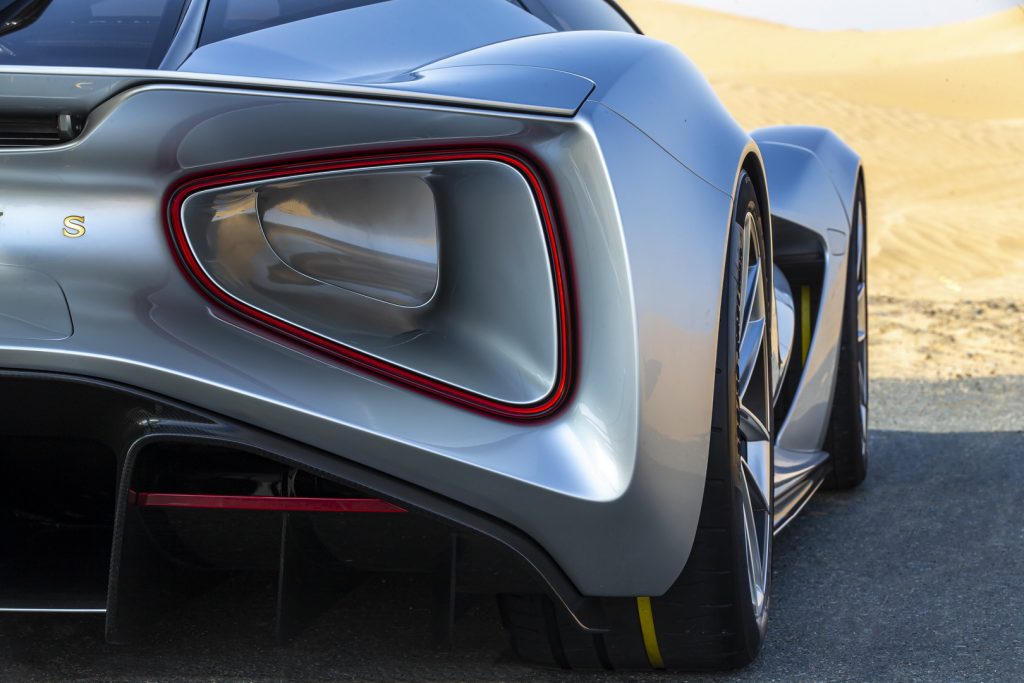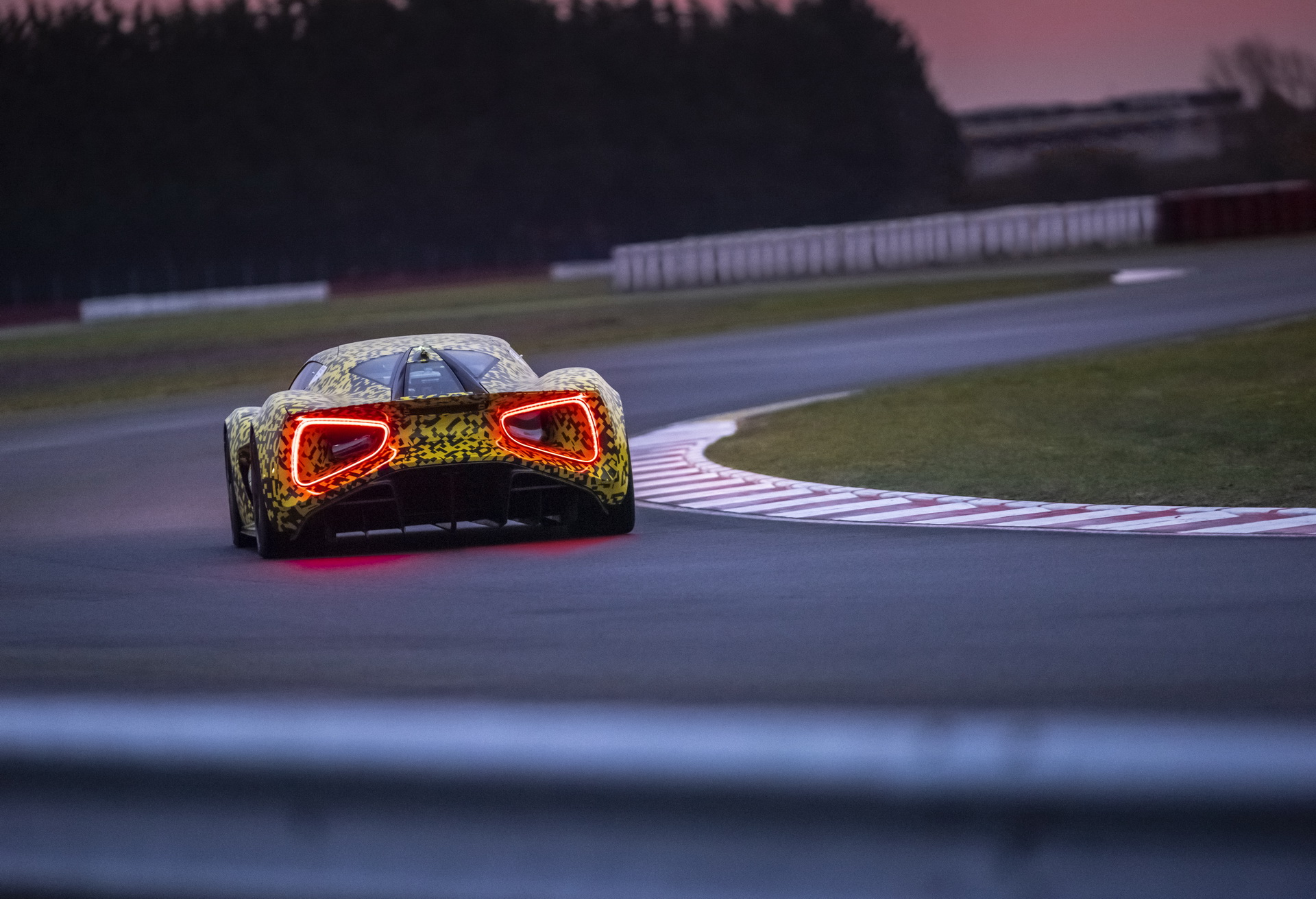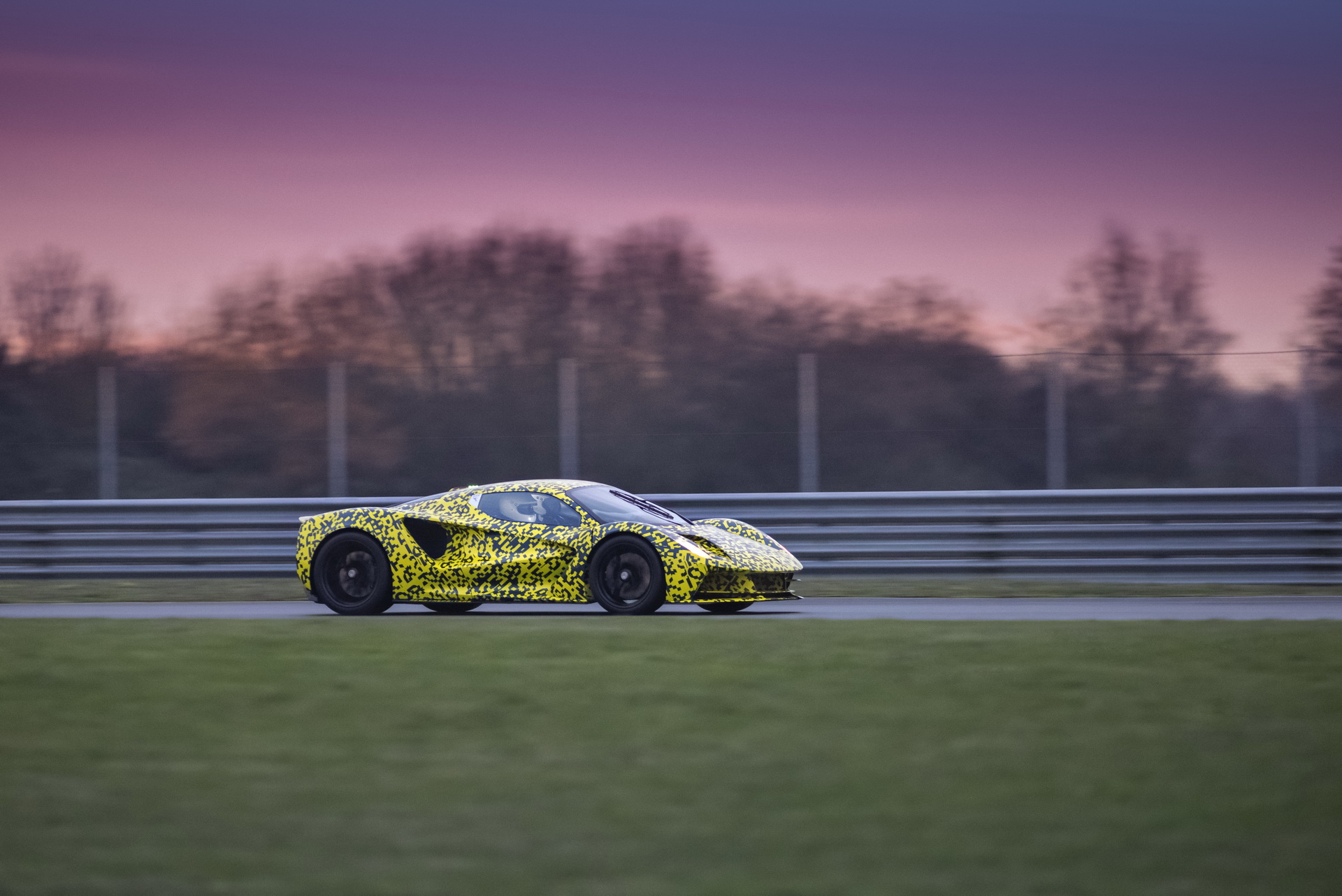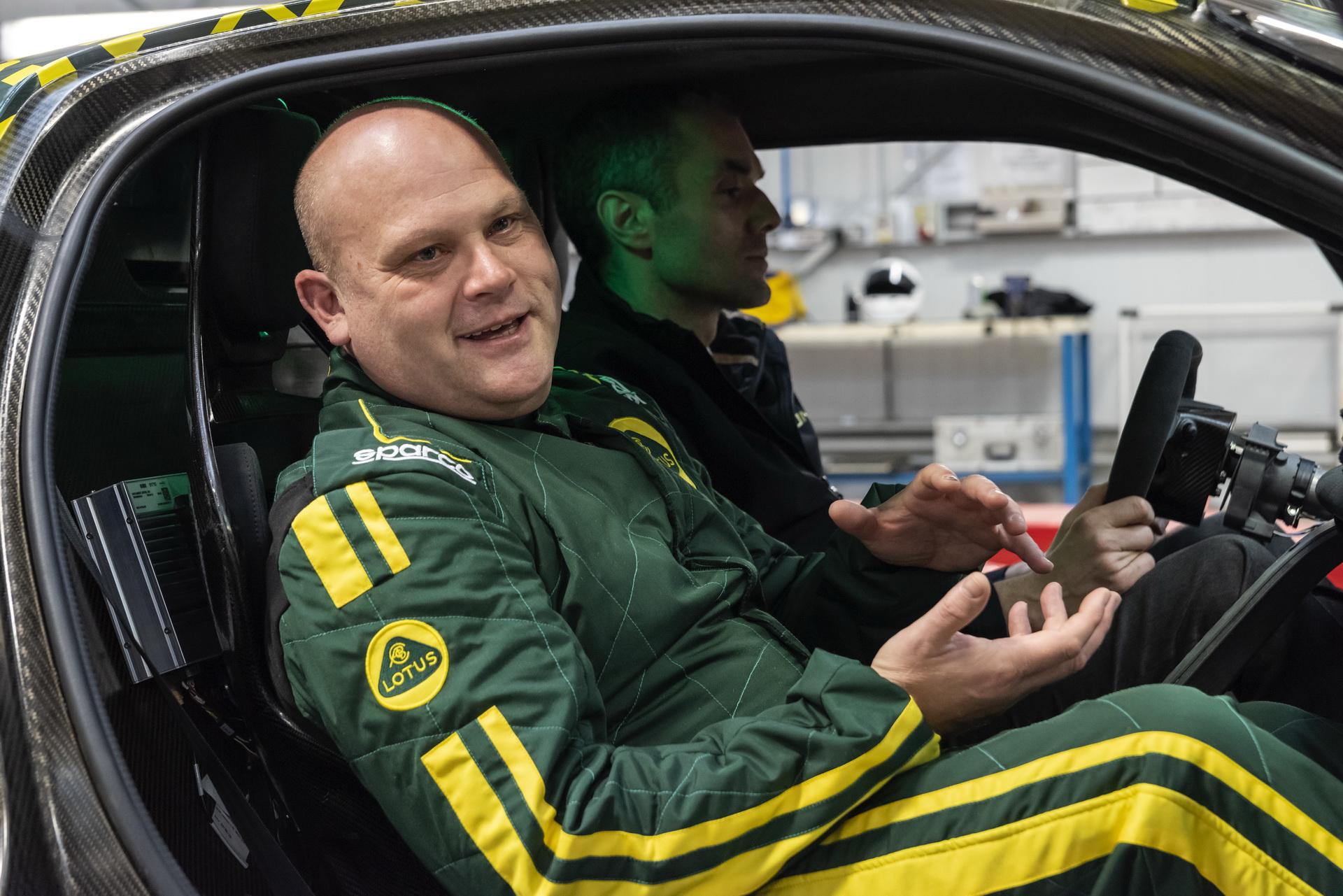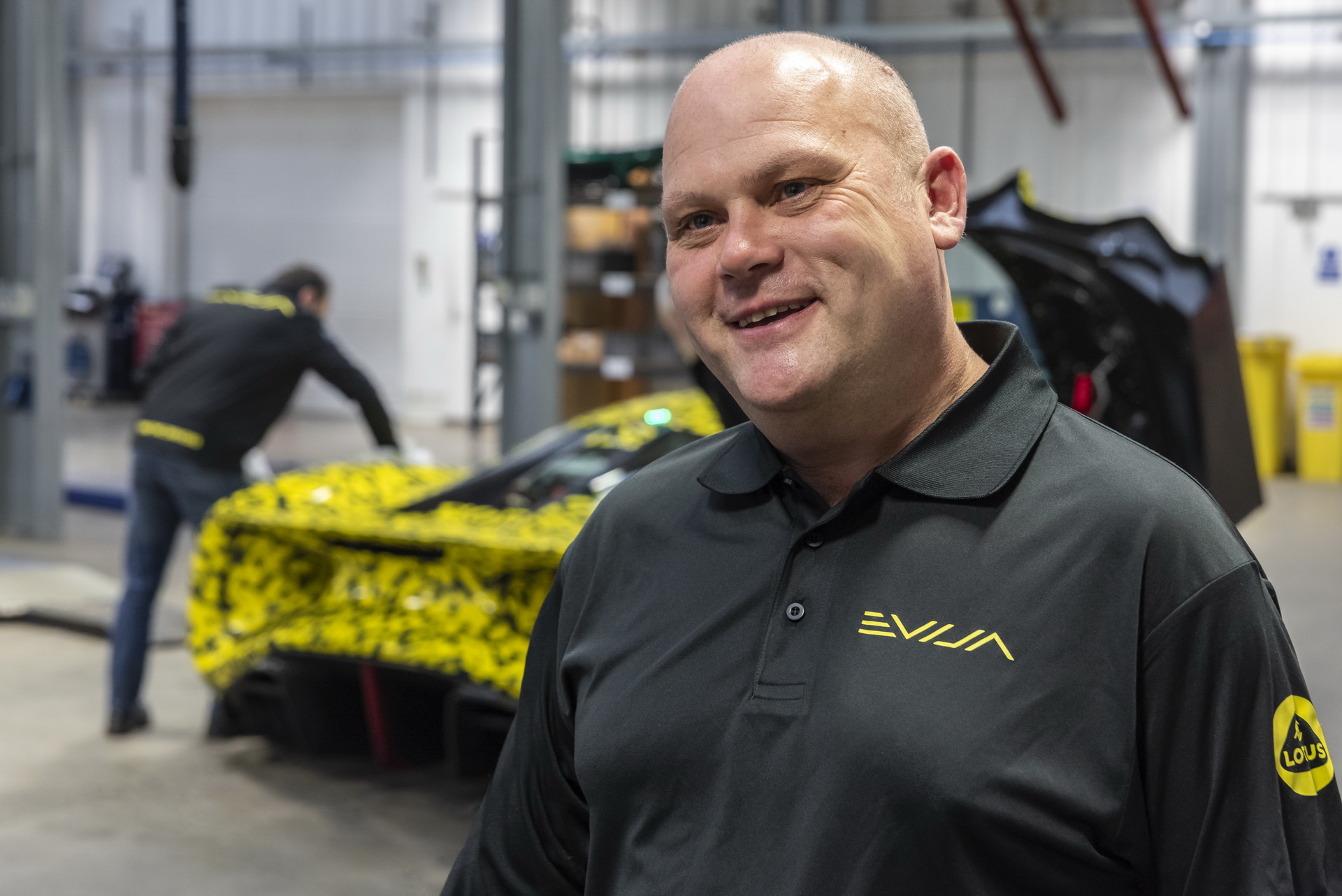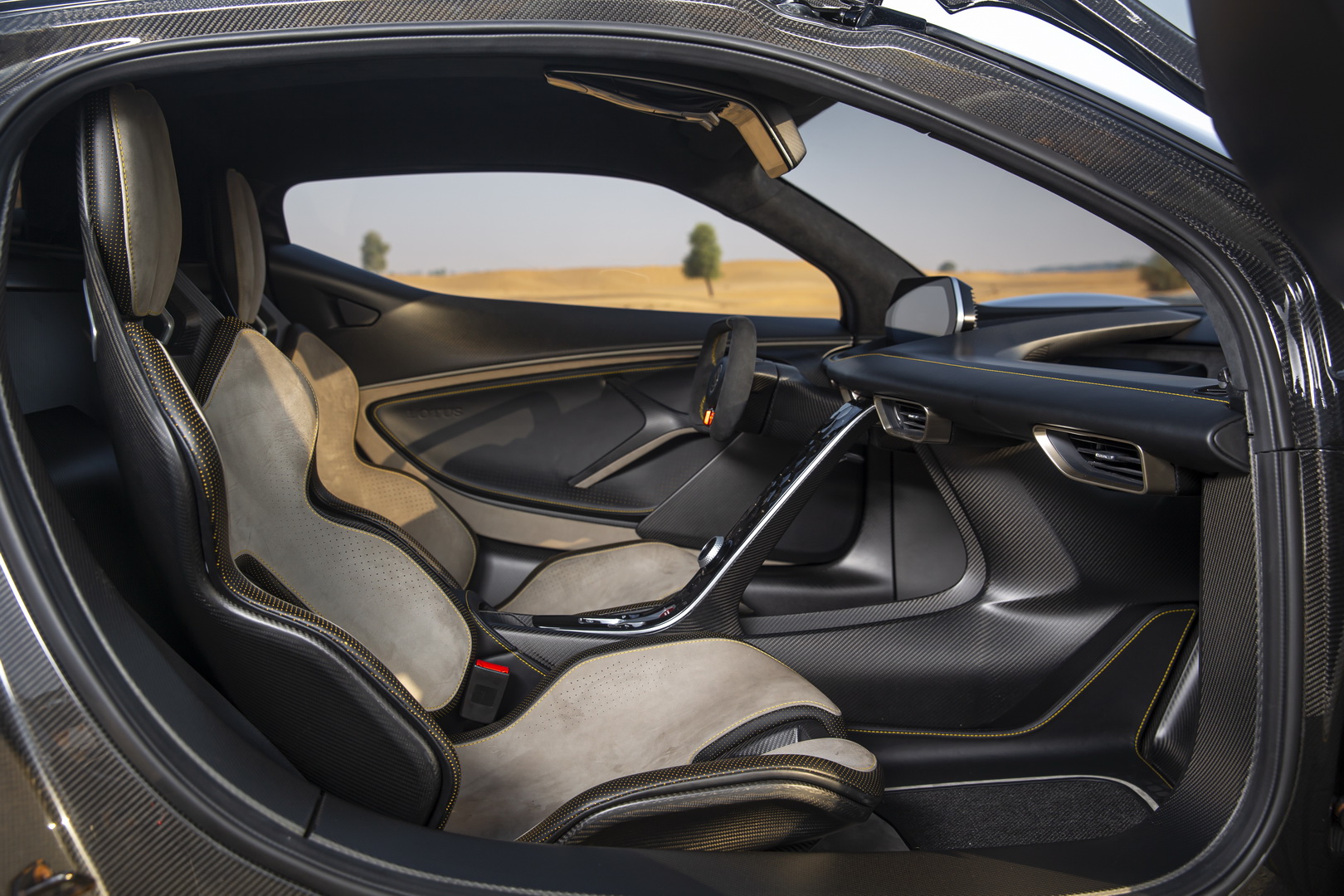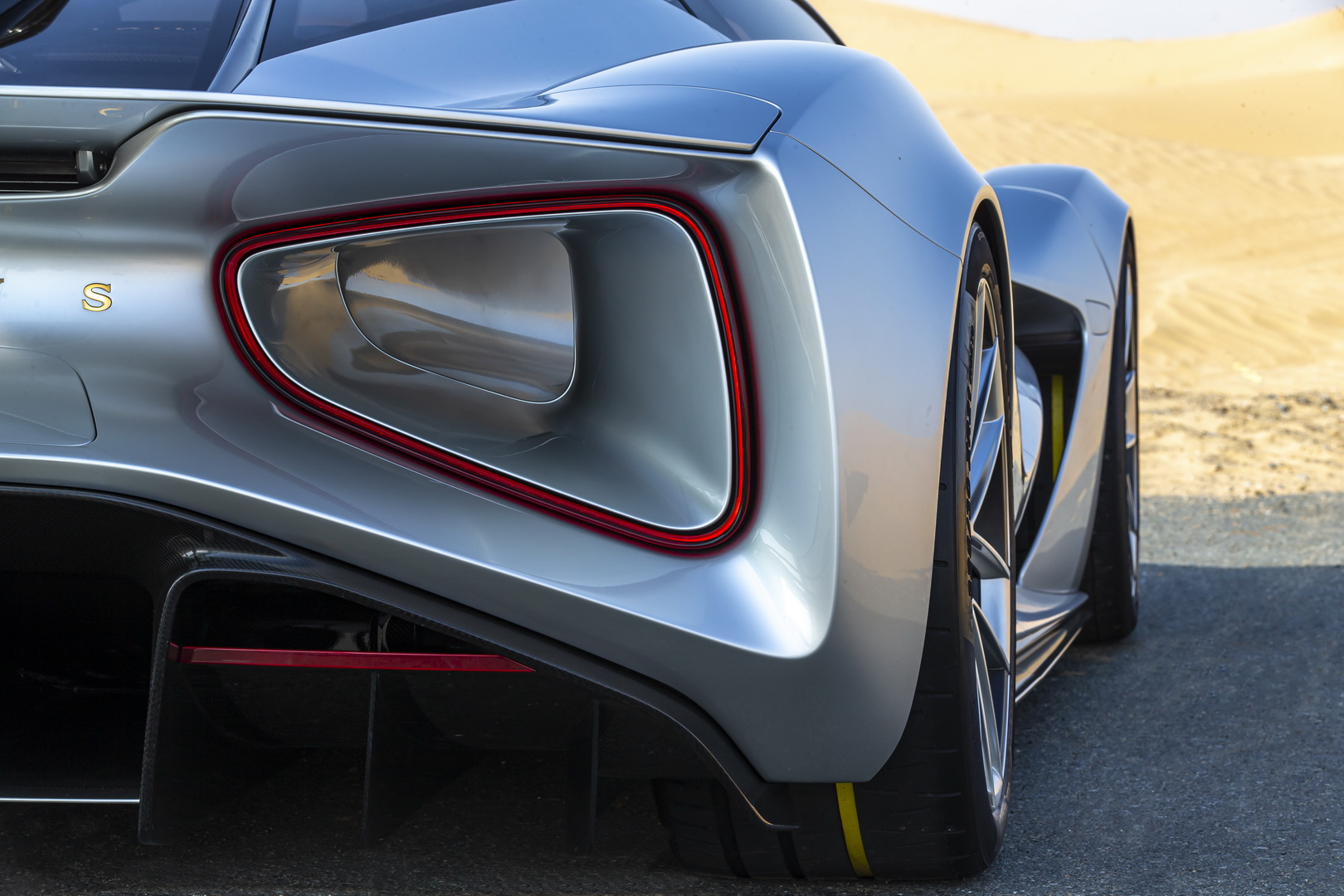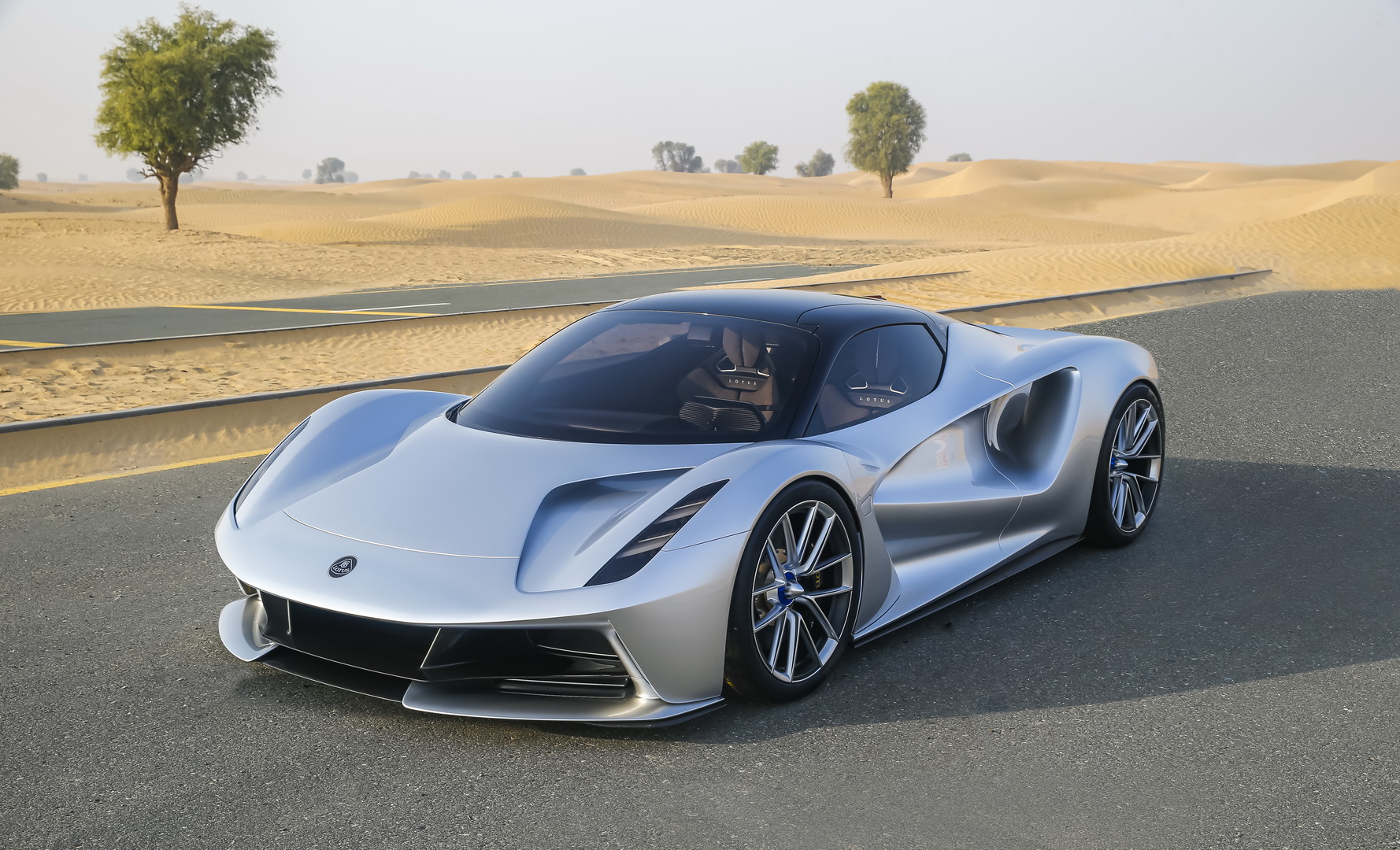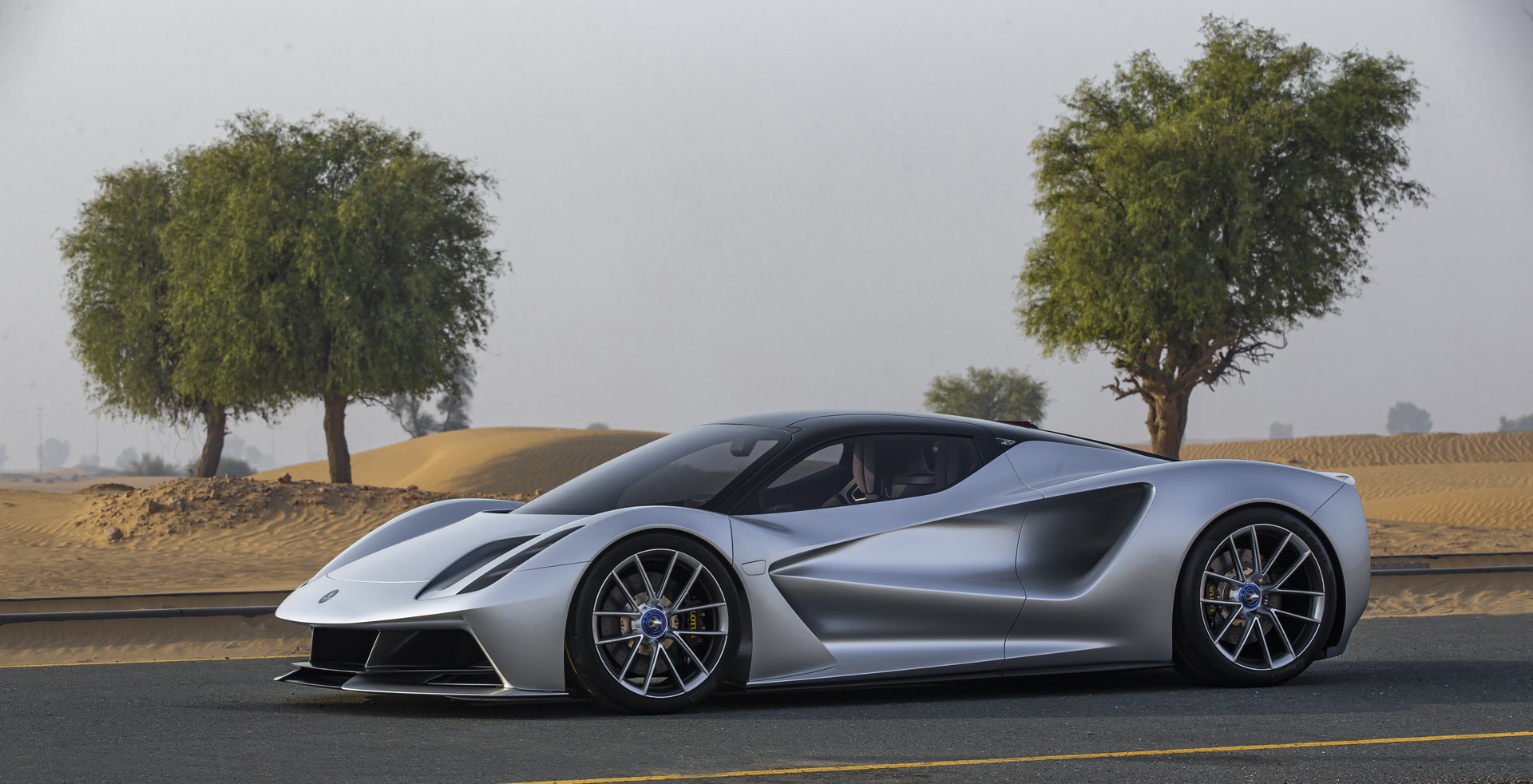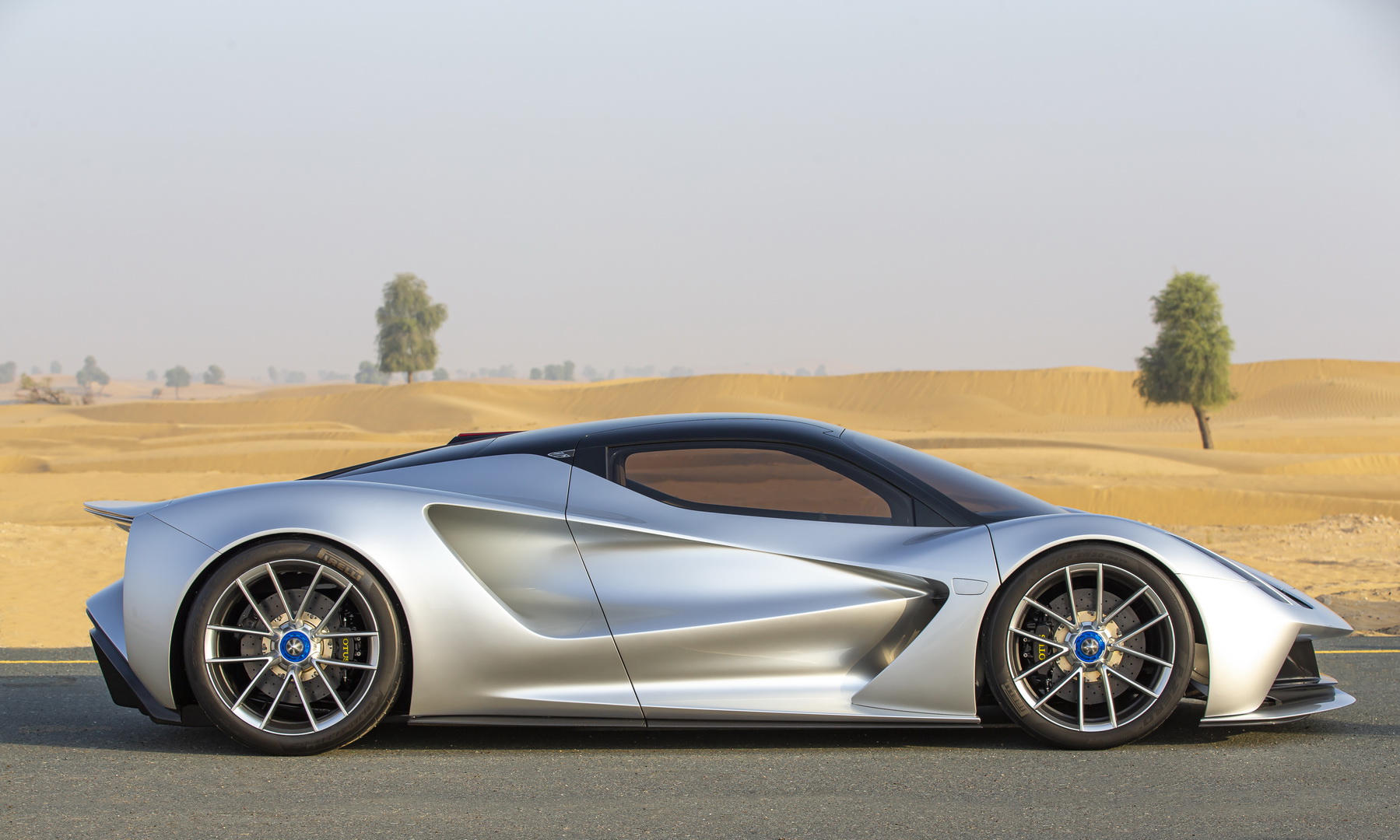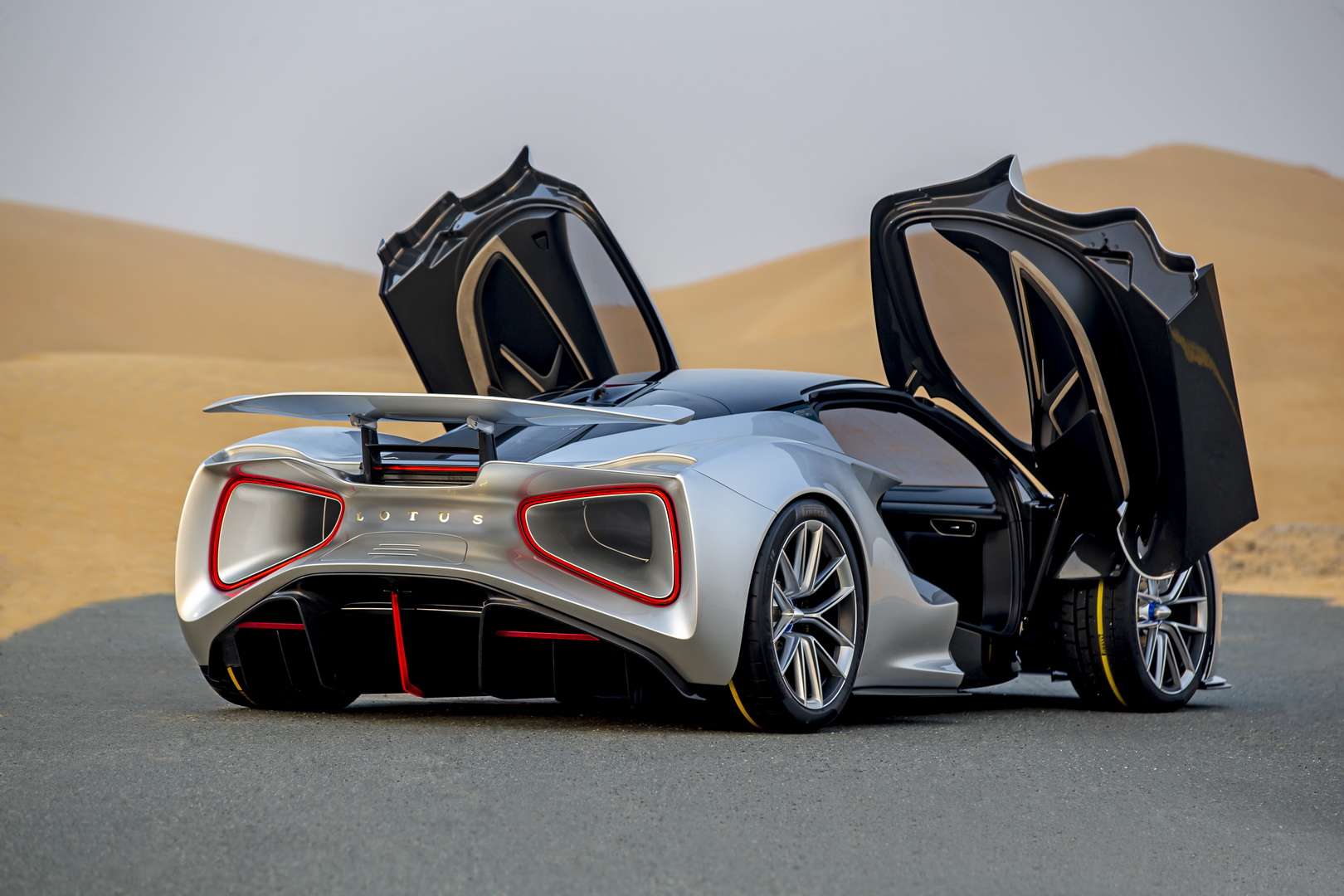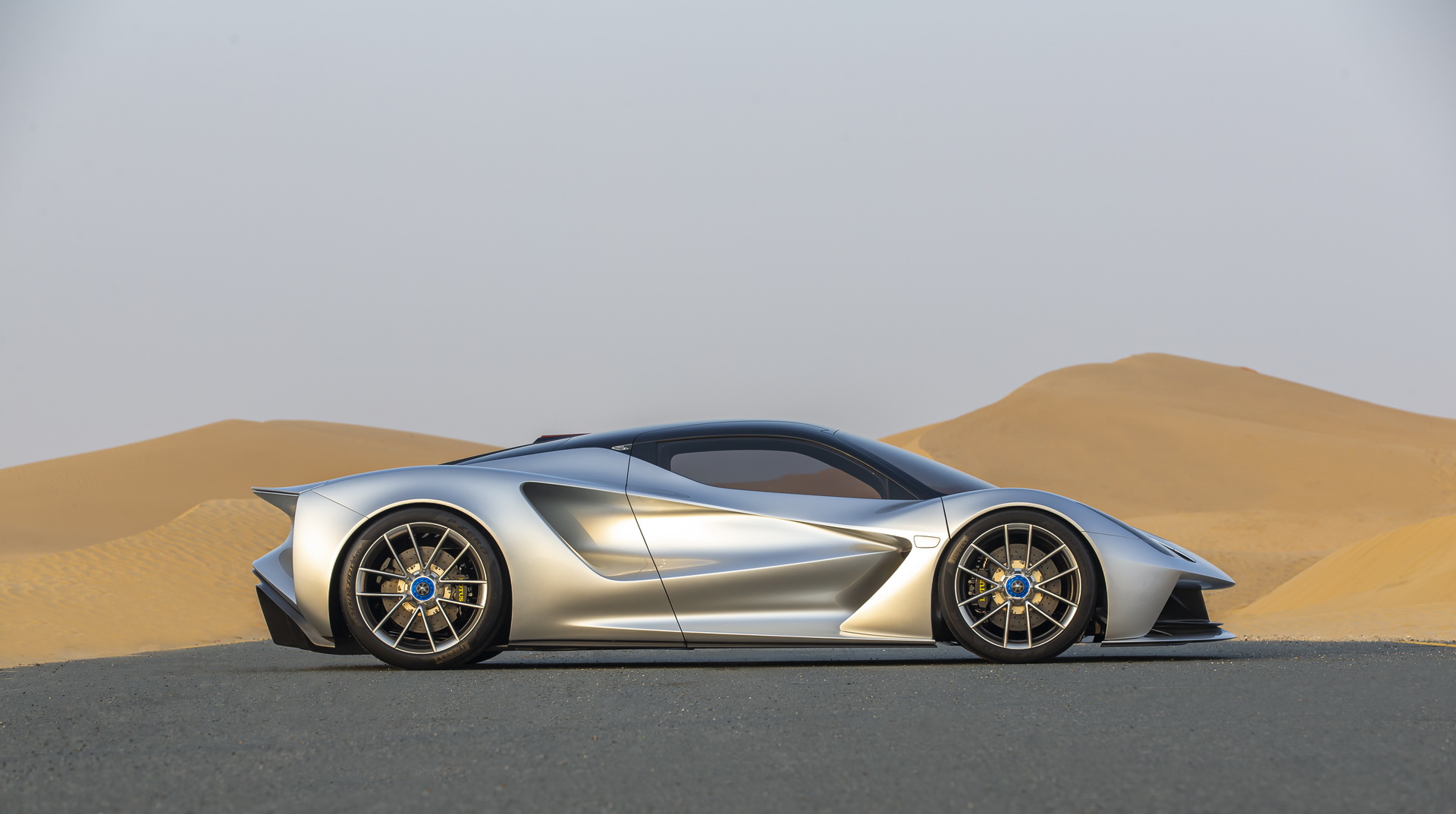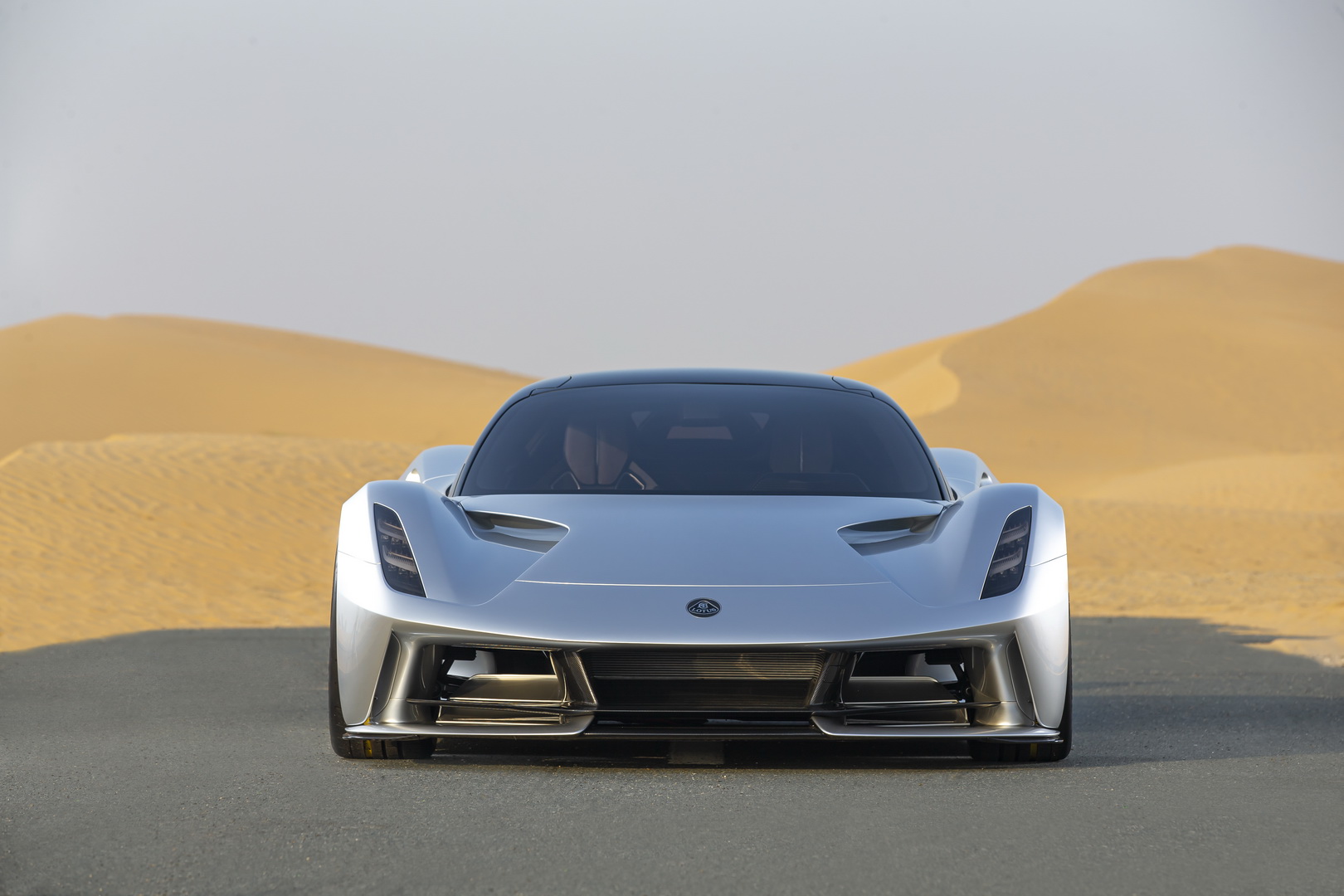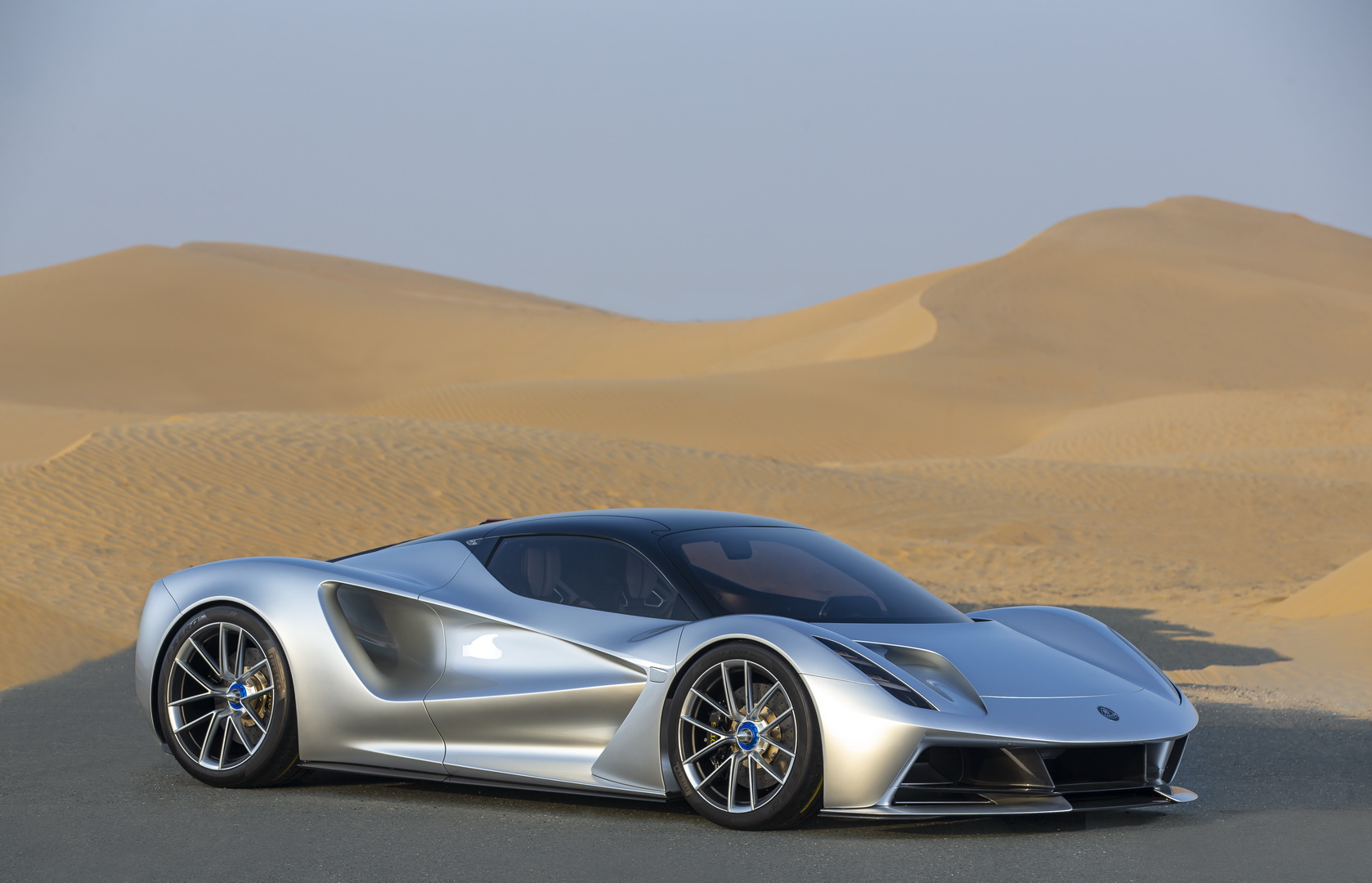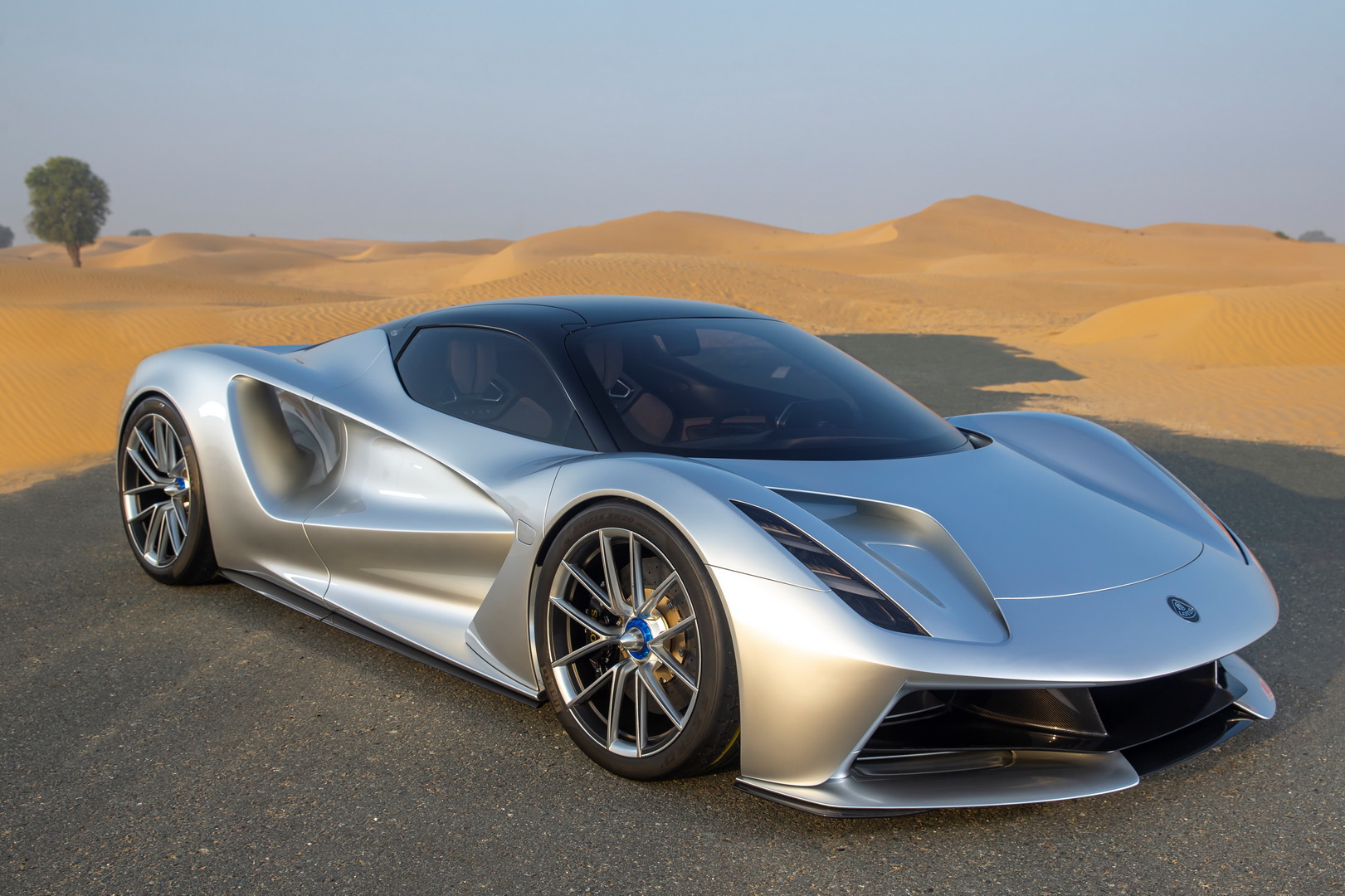The development of the first fully-electric Lotus is underway, with the company’s engineering team assessing at this point the hypercar’s core chassis dynamics with no driving aids or torque-vectoring.
The British car maker has three engineering prototypes running, with the chassis #2 being the most advanced of the lot; it features a customer-spec suspension, the EV powertrain, brakes and full carbon-fiber bodywork.
Related: Watch The Lotus Evija Hypercar In Action For The First Time
The specific prototype also features the most completed interior yet, featuring production seats and the so-called ski slope-style floating center console present. The prototype Evija (pronounced E-vi-ya) is also fitted with hydraulics that operate its active aero agenda.
“The car is in a completely pure state at the moment, with no stability control or torque-vectoring,” said Gavan Kershaw, Lotus chief tester. “This is so we can evaluate the fundamentals of the chassis, to create the mechanical advantage before the other layers, such as the electronics, are added. It means we can really read the car. Later we can tune what we’ve gained as a mechanical advantage as we add layers. It’s the Lotus way – get the fundamentals right from the start and use baseline aerodynamics, suspension kinematics and geometry to feel the vehicle’s response.”
The upcoming Lotus Evija will enter a limited production run of just 130 units, with the company now accepting deposits from prospective customers. The electric hypercar will be priced at around £1.7 million ($2.3 million in current exchange rates).
Power will come from no less than four electric motors with a combined target output of 1,972 HP (2,000 PS), which will make the new Lotus Evija the most powerful production road car in the world. Lotus claims that 0-62 mph (100 km/h) will come in less than 3 seconds, with 0-186 mph (300 km/h) being dealt in a breathtaking nine seconds, while top speed will exceed 200 mph (322 km/h).
“I feel really at home in it, it’s really driveable,” Kershaw added. “We assessed the stability and agility through tight corners. We did brisk accelerations to work out the torque split and looked at tyre grip and response. We assessed steering-wheel angle versus vehicle response at different speeds to ensure the car feels nimble at 30mph as well as 200mph.”
“It’s also about bringing in experience from other vehicles – what we know from driving Exige and Evora, the Lotus GT race cars – and making sure that core Lotus DNA is all at its absolute best in the Evija.”
The final production example of the Lotus Evija will use a 70kWh battery pack, compatible with 800kW fast-charging. It’ll give the first electric Lotus a driving range of 250 miles and will be able to fully recharge in 18 minutes.
Production of the Lotus Evija is planned to begin next year, so stay tuned for more news from its development.








